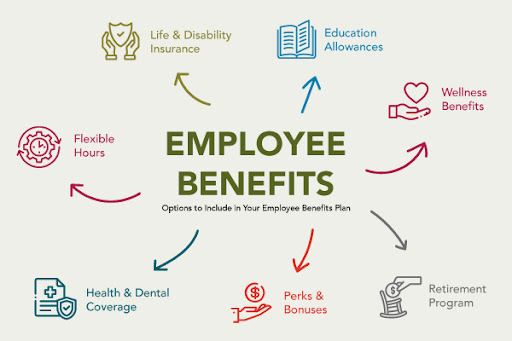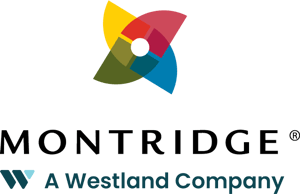With 5 different generations of employees in the workforce, the demand for benefits to be flexible is higher than ever.
Employees want to choose what is included in their benefits plans, and workforces are shifting towards an employee-first work environment. Today’s labor market calls for flexibility in employee group benefit plans in order to attract and retain talent, with many companies competing to be named a top employer in their respective industry.Read on to find out how you can attract and retain talent while standing out from the crowd.

Traditional vs Flexible Benefits: What is the Difference?
Before we dive into the benefits of incorporating flexible options into your group benefits plan, it is important to understand the difference between traditional flexible benefits and adding flexibility to your overall compensation. A flexible benefits plan is a benefits plan that allows employees to choose from predetermined menus. Employees usually choose between three offerings. Depending upon how the employer has chosen to design and fund the plan, employees generally choose between a plan with limited coverage, one offering median coverage for their industry, and a rich plan offering higher reimbursement levels and more benefits.
Most commonly, the basic plan or the middle of the road plan are fully funded by the employer. In the case of the median plan being fully funded, employees who choose the budget plan can redirect excess premium credits to other benefits such as additional vacation time or retirement savings. When choosing a plan that is not fully funded by the employer, the employee must pay a portion of the total premium. The advantage of a flexible benefits plan is that it allows employees to partially tailor their benefits to their budget and circumstances. It offers more choice than the more common plan type featuring a single set of benefits that a company provides to all employees.
Flexible benefit plans provide employees with greater choice regarding their benefits, and provide employers with an opportunity to:
- Control their costs by defining the dollars to be spent.
- Increase employee awareness regarding benefit costs
- Encourage employees to become more responsible shoppers for health services
However, there is greater administrative complexity associated with traditional flexible benefits plans. Employees must choose their benefits annually. Mid-year changes are restricted to changes in life circumstances such as the birth of a child or marriage. There are limits on moving from one plan type to another: one cannot generally move from the basic plan to the most generous plan from one year to the next. Movement is limited to moving one “rung” at a time either upward or downward.
Because of the additional complexity, traditional flex plans are generally found only with large employers. Although some insurers offer a “mini-flex” that can be attractive in the right situation.

Types of Workplace Benefits
In addition to traditional or flexible employee benefits plans, employers are increasing adding a diverse range of benefits including:
- Commuter benefits (e.g., reimbursement of parking or mass transit costs)
- Flexible scheduling (e.g., flex time, compressed workweeks, shift flexibility or job sharing)
- Paid volunteer time (alone or with company driven initiatives)
- Professional development (e.g., classes or training to earn or maintain professional credentials)
- Telework options (e.g., working from home or video conferencing)
- Time-off benefits (e.g., personal days, floating holidays or vacation buying
Flexible Spending Benefits
For firms that do not have the capacity or desire to implement structured flexible benefits plans, adding spending accounts such as Healthcare Spending Accounts (HSA) or Wellness or Lifestyle Spending Accounts (LSA) to their core or traditional offering, provides employees the flexibility to augment those areas of reimbursement that are most important to them. There are two types of flexible spending benefits:
- Healthcare spending accounts (HSA) for medical expenses that can be reimbursed under the Canada Health Act, with reimbursement that is non-taxable to the employee.
- Wellness or lifestyle spending accounts that cover expenses such as transit passes, gym memberships and summer camps for kids. Reimbursement is taxable to the employee.

Employee Attraction and Retention with Offering Flexible Benefits
Survey after survey shows that 80% of employees would choose flexible benefits over a pay raise. This statistic proves that employees prefer the security and protection that come with a benefits package versus a higher salary. The last two years have brought dynamic, sweeping changes to the modern workforce, and as an employer, it is important to react accordingly. Therefore, adding more flexibility to your benefits plan will, in turn, attract more employees and retain top quality talent.
Our experts encourage you to consult with an experienced advisor before settling on your group benefits plan to ensure you select the best overall compensation strategy for your organization.
Final Thoughts: The Future of Benefits
In closing, to attract and retain top quality employees employers need to get creative with how they provide their group benefits plan. Employees want to join organizations that care about their overall health and wellbeing, and provide flexibility. With an overwhelming amount of options to choose from most employers don’t know where to start and often end up going with a cookie cutter package. We encourage you to seek out assistance from an experienced advisor to ensure your organization can attract and retain the highest quality of employees, ensure your plan remains sustainable over the long term, and in turn, boost your business's bottom line.









